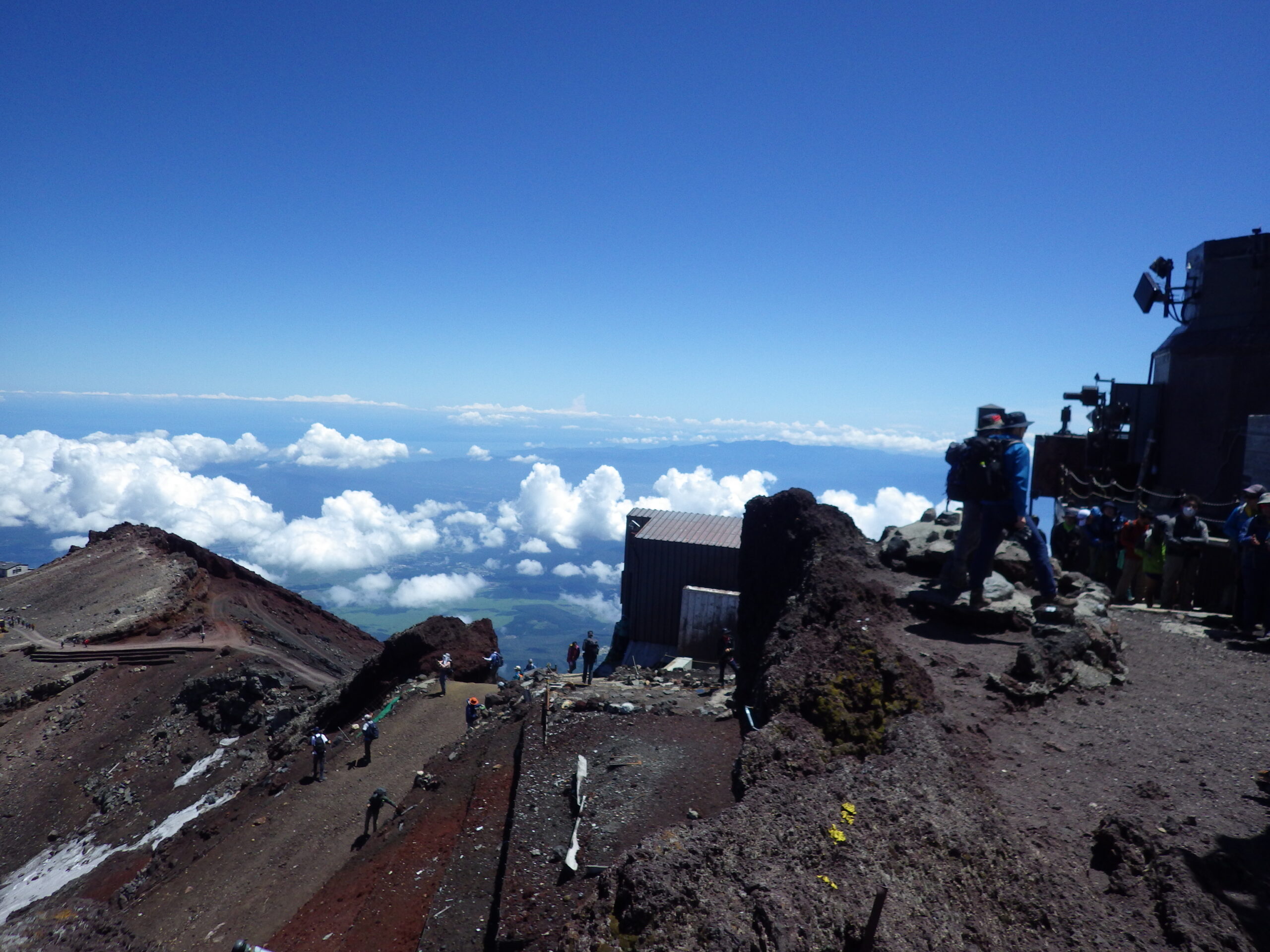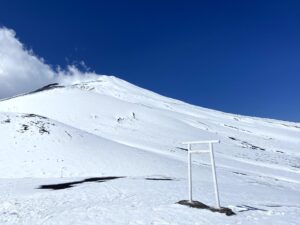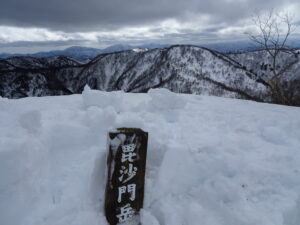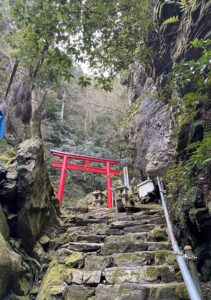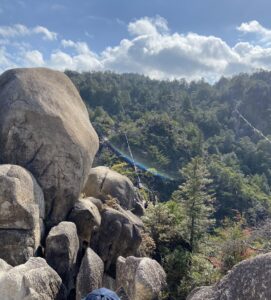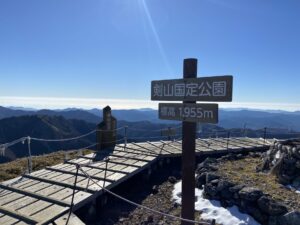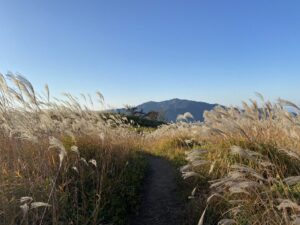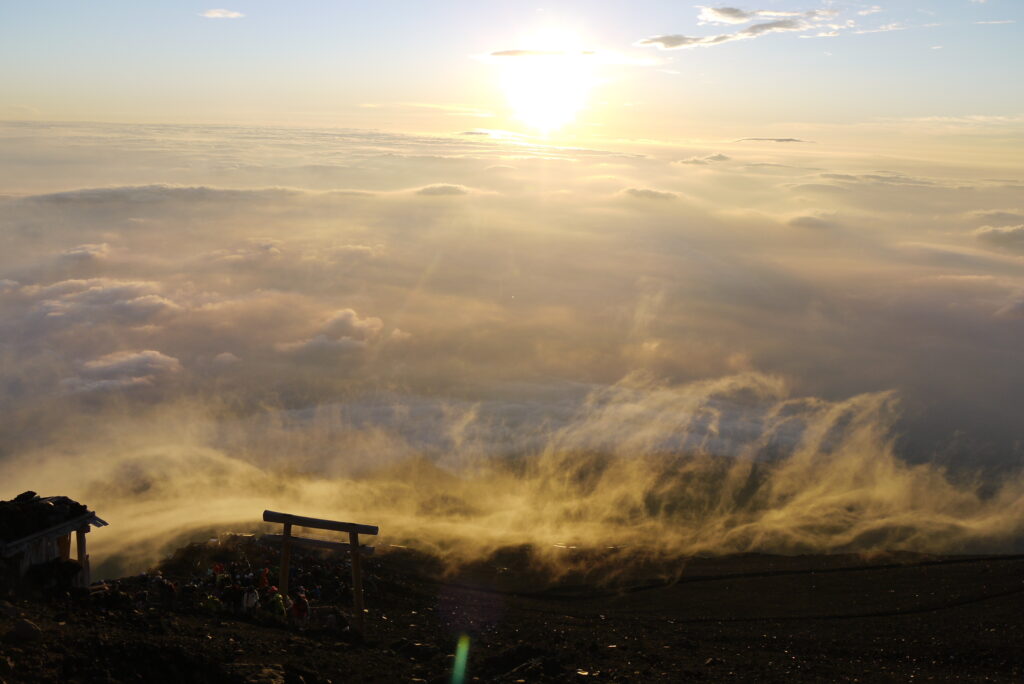
Have you ever climbed Mt. Fuji? There are various opinions about it, such as “Mt. Fuji is more of a mountain to look at than to climb,” or “I’ve only climbed Mt. Fuji during the snowy season,” voiced by experienced mountaineers and others. However, I’ve climbed Mt. Fuji five times during the summer because I lack the skills to climb it in winter.
In 2014, I climbed Mt. Fuji for the first time via the Fujinomiya Route. While climbing, the wind was strong, but there were also moments of sunshine. I reached Munatsuki hut which is between the 9th station and the summit and spent the night there.
However, starting from midnight, heavy rain began to pour, and even though I was so close to the summit, I couldn’t make it. In the midst of unprecedented strong winds and rain, I struggled with the harshness of Mt. Fuji and decided to descend the next morning. Looking back, I feel that this experience has been beneficial for my later climbs.
In the following year, 2015, I decided to give it another try while keeping an eye on the weather forecast. I drove all the way from Osaka by myself and chose the Subashiri Route to climb Mt. Fuji.
I successfully reached the summit! I was fortunate to witness such a beautiful sunrise. After circumnavigating the crater, I felt the wind of Mt. Fuji as I descended.
I couldn’t have imagined back in the day that I would someday achieve my first solo ascent of Mt. Fuji. As I drove back, still feeling the sleepiness in my eyes, I reflected on this journey and the emotions that accompanied it.
The memories of that moment are still vivid in my mind.
In 2017, at the request of a friend, I climbed Mt. Fuji via the Yoshida Route. During that climb, we stayed at the Toyokan hut, which, although it was before the COVID-19 pandemic, had individual compartments for sleeping. It seemed like it might have been designed with foreign climbers in mind, and it was a very clean and comfortable hut.
This route is undoubtedly the most popular, and there were a lot of climbers. The queues leading up to the summit for the sunrise viewing were quite long, and it felt a bit crowded. I also noticed that there were more foreign climbers than Japanese climbers on this route.
In 2018, I climbed Mt. Fuji with my family via the Subashiri Route. Even on this occasion, I was able to show my family the beautiful sunrise, and it felt like a mission accomplished. During the descent through the sand run, I heard voices saying, “We’re tired!” But compared to the Yoshida Route, there were fewer people on this route, and we enjoyed the climb while observing the unique cloud movements around Mt. Fuji.
In 2021, I took an early morning shuttle bus from the Mizugatsuka Park parking lot with a friend. We climbed via the Fujinomiya Route and descended through the Gotemba Route, passing through Mt. Hoei (2693m) and around the Hoei Crater. This route is known as the “Prince Route.”
The Hoei Crater was formed during the massive eruption of 1707 (Hoei 4), and it was elevated during that eruption. Since then, there have been no eruptions, making Mt. Hoei the latest side volcano of Mt. Fuji.
The view of the Hoei Crater gives the impression that it could erupt at any moment.
It took about 10 hours round trip, but during this time, with the backdrop of the COVID-19 pandemic, there were fewer climbers, and there were no long queues at the Kengamine summit. Throughout the hike, under clear skies, it was my first time doing a day round trip to Mt. Fuji, and the sense of accomplishment was immense. It became a wonderful and memorable climb.My top recommendation would still be this route: climbing via the Fujinomiya Route and descending through the Gotemba Route, passing through Mt. Hoei and the Hoei Crater on the way down.
Absolutely, the views from Mt. Hoei are stunning, and walking around the Hoei Crater gives you a close encounter with the volcano, which can be both thrilling and awe-inspiring!
This year, it does seem like there will be many climbers from abroad, and I’ve heard news that mountain huts are already filling up. From a tranquil Mt. Fuji to the usual bustling experience, it will be quite a change.
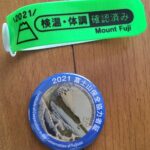
In 2021, I had to undergo a temperature check and wear a wristband at the parking lot before boarding the shuttle bus for my Mt. Fuji climb. I kept the wristband on until I completed the descent. It reminded me of the wristband I had to wear during a hospital stay, which made me feel a bit strange about wearing one for a mountain climb.
I hope this blog can be of some help to those planning to climb Mt. Fuji in the future.



